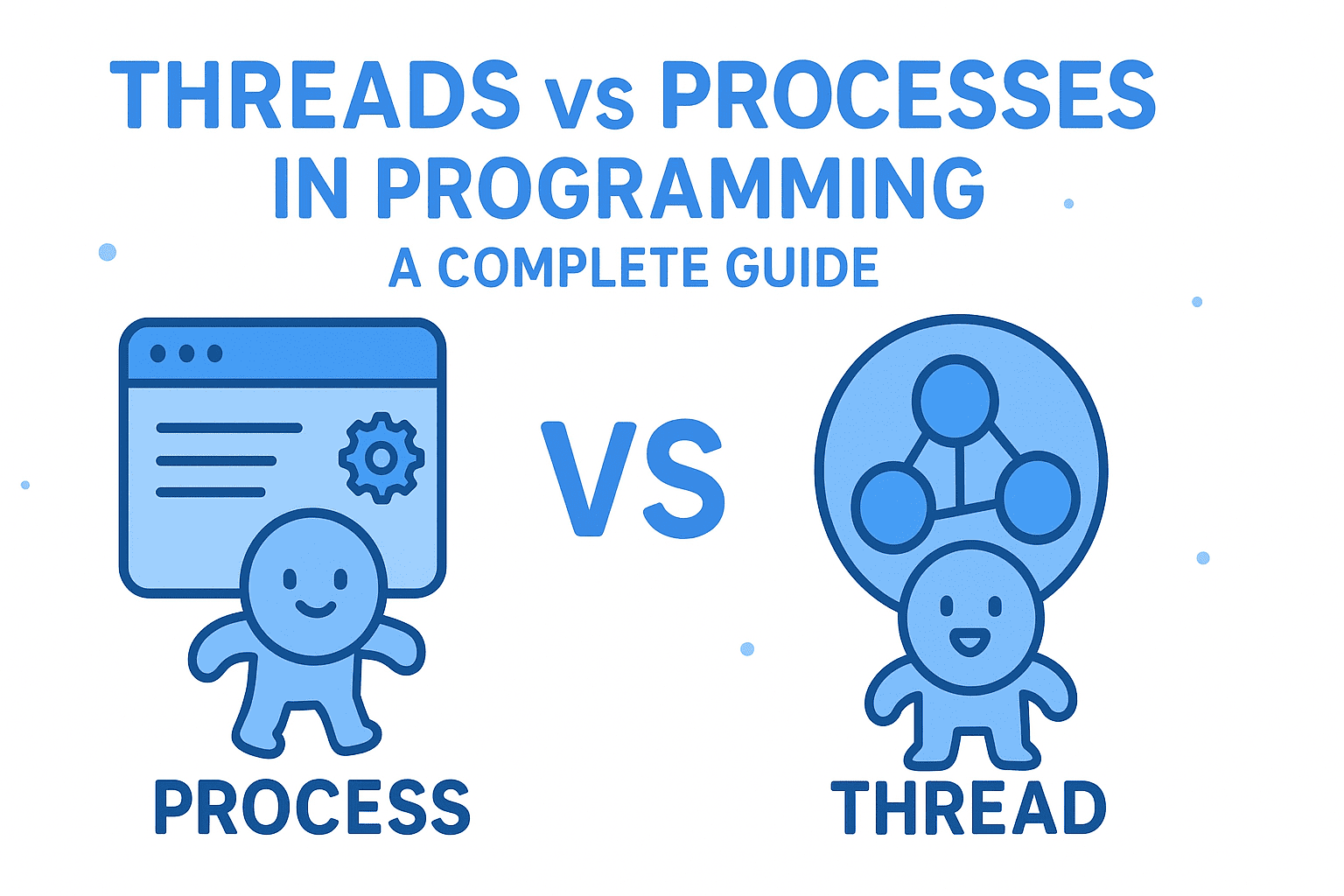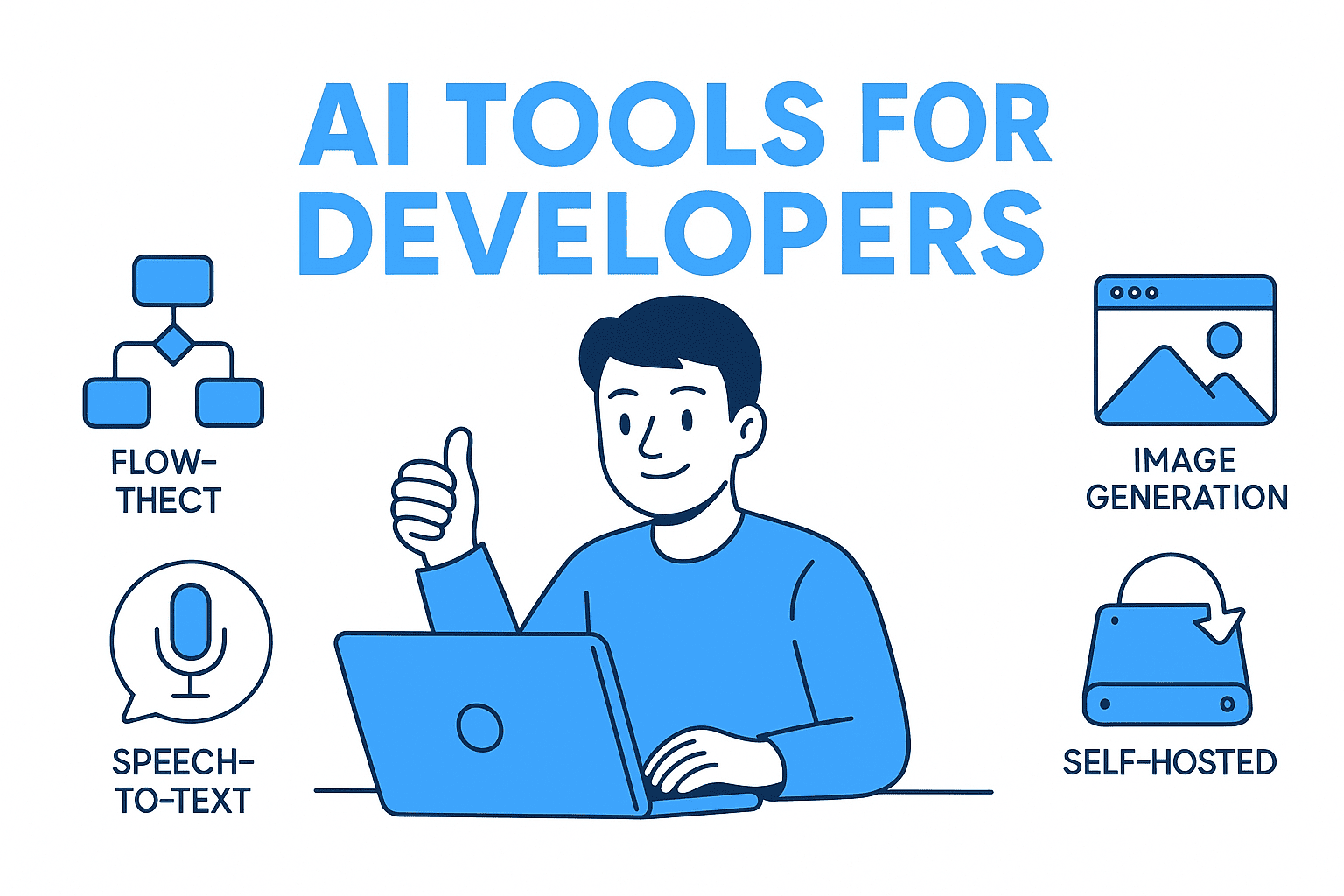Understanding the difference between threads and processes is essential for developers who want to optimize software performance, resource usage, and responsiveness. These two concepts are fundamental to concurrent programming and parallel computing, yet they’re often confused. This guide explains what they are, how they work, their pros and cons, and when to use each.
What Is a Process?
A process is an independent program in execution. When you launch an application on your computer, like a browser or text editor, the operating system creates a process for it.
What is the key characteristics of a process?
- Own memory space: Each process has a dedicated memory address space.
- Own resources: Includes file handles, sockets, and system objects.
- Isolation: Processes can’t directly access each other’s memory.
- Managed by the OS: The kernel schedules processes for CPU time.
Because processes are isolated, they are more secure and stable. If one process crashes, it usually doesn’t take down others.
Example: Running two separate instances of a word processor creates two independent processes.
What Is a Thread?
A thread is the smallest unit of execution within a process. A process can have one thread (single-threaded) or multiple threads (multi-threaded).
What is the key characteristics of a thread?
- Shares memory: All threads in a process share the same address space.
- Shares resources: Threads use the same file handles and sockets as the process.
- Lightweight: Creating a thread requires less overhead than creating a process.
- Managed by the OS or a thread library: The scheduler can switch between threads faster than between processes.
Example: A web browser may have one thread for rendering the page, another for processing JavaScript, and another for handling user input, all within the same process.
What is the key Differences Between Threads and Processes?
| Feature | Process | Thread |
|---|---|---|
| Memory space | Separate for each process | Shared within a process |
| Creation cost | High (requires OS-level allocation) | Low (uses existing process resources) |
| Communication | Requires Inter-Process Communication (IPC) | Direct memory access (shared data) |
| Isolation | Strong isolation | Weak isolation |
| Crash impact | Limited to that process | May crash the entire process |
What is the advantages of Processes?
- Stability – One process failing doesn’t crash others.
- Security – Memory and resources are protected.
- Scalability – Processes can run on different machines or cores easily.
- Robust debugging – Easier to trace issues without affecting other processes.
What is the advantages of Threads?
- Lower overhead – Threads are lighter and faster to create.
- Faster communication – No IPC needed; threads share memory directly.
- Better resource usage – Less memory duplication.
- Responsive applications – Ideal for real-time UI updates.
Drawbacks of Processes
- High memory usage – Each process needs its own memory space.
- Slower context switching – More CPU time spent switching between processes.
- Complex communication – Requires IPC mechanisms like pipes, sockets, or shared memory.
Drawbacks of Threads
- Data safety risks – Shared memory can lead to race conditions.
- Difficult debugging – Concurrency bugs are harder to track.
- Crash propagation – If one thread fails, it can take down the whole process.
When to Use Processes vs Threads?
Use processes when
- Security and isolation are priorities.
- Tasks are independent and can run separately.
- You want to leverage multiple machines or containers.
Use threads when
- Tasks share data frequently.
- You need lightweight parallelism.
- The application must remain highly responsive.
Real-World Examples
Processes
- Web servers like Apache can run multiple worker processes to handle client requests.
- Database servers often spawn separate processes for isolation and reliability.
Threads
- Web browsers use threads to handle rendering, networking, and JavaScript execution simultaneously.
- Games use threads for AI, physics, and rendering to keep gameplay smooth.
Conclusion
Both threads and processes are powerful tools for structuring concurrent programs.
- Processes provide isolation, stability, and security at the cost of performance and memory usage.
- Threads deliver speed and efficient communication but require careful synchronization to avoid errors.
When designing an application, choosing between threads and processes depends on the balance you need between performance, safety, and complexity. Understanding their differences ensures you can build software that’s both efficient and reliable.
🤝 Need a Custom RSVP System or Dashboard?
I help businesses build tools that actually work — even on tight deadlines.
Whether you're planning an event, need internal tools, or want a custom dashboard for your team — I can help.
Reach out
📧 Email: safi.abdulkader@gmail.com | 💻 LinkedIn: @abdulkader-safi | 📱 Instagram: @abdulkader.safi | 🏢 DSRPT
Drop me a line, I’m always happy to collaborate! 🚀



